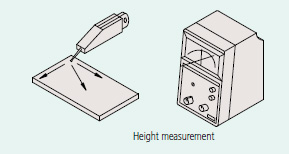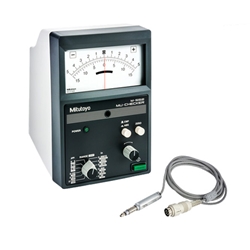
How does Mitutoyo's Mu checker System Work?
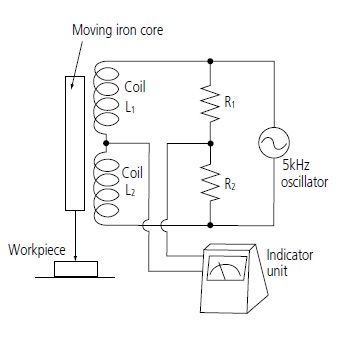
The Mu checker uses the following measurement principle: a differential inductance displacement sensor, which is energized by a 5 kHz AC exciting voltage, is applied across two identical coils connected in series, L1 and L2. An iron core, which is connected to the probe stylus, moves close to both coils. The impedance of each coil varies depending on its position. The voltage at the junction of the coils will vary according to the difference in impedance. Two resistors, R1 and R2, form a bridge circuit with the two coils. The bridge output voltage drives electronic amplification and conditioning circuits. Finally, the circuits will provide a voltage signal proportional to the displacement of the stylus.
What are some applications for Mitutoyo's Mu checker?
There are various applications for the Mu checker. A few are described below.
The following graphic depicts measuring runout, which is an error in the rotation about a central axis of a rotating mechanical part. This graphic is depicting the measurement of runout to quantify the distortion of a core. This Mu checker system may be used for this type of measurement.
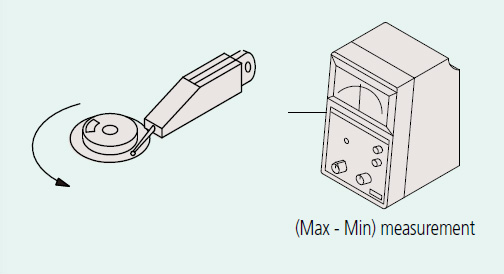
The following graphic depicts the measurement of the inside width of a car's wheel using this Mu checker system.
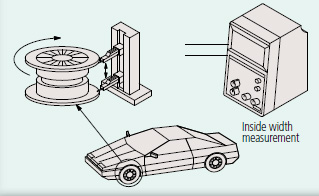
Delicate surfaces may be measured using the Mu checker, as displayed in the graphic below. The warp of an LCD panel may be measured with this Mu checker system. The lever head probe with a low force won't damage the surface of the LCD screen.
